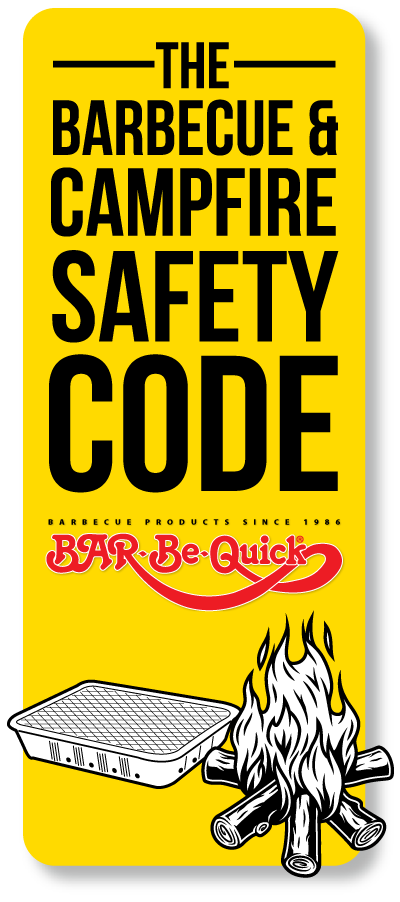
Choosing the Right Spot for Your BBQ or Campfire
Identifying an appropriate location is vital for the safe enjoyment of BBQs and campfires. Ideally, choose a level area, ensuring it has no potential fire hazards such as dry grass, bushes, or low-hanging branches. Proximity to flammable materials can quickly escalate a controlled fire into a dangerous situation. If your chosen venue has designated BBQ spots, it’s important to utilise these facilities, as they are specifically designed to mitigate risks associated with open fires.
Adhering to any local regulations or signage regarding fire use will also help prevent accidental damage to natural surroundings or incurring penalties.
By selecting an optimal spot, you contribute to both the safety and enjoyment of your outdoor cooking experience.
Preparing for Safe BBQ Use and Campfire Management
Before lighting your BBQ or campfire, taking precautionary measures is essential to prevent potential fires. It is recommended that emergency extinguishing methods be used at hand, such as a bucket, bottle of water, or fire extinguisher. When using a disposable BBQ, it is crucial to place it on a stable, non-flammable surface and to follow the provided safety instructions. Avoid using accelerants like lighter fluid, which pose a significant risk of causing uncontrollable flare-ups. Additionally, ensuring that your cooking area is free of debris and combustible materials will protect against unexpected fires. These preparatory measures are easy to carry out and fundamental in creating a safe environment for outdoor cooking adventures.
Lighting Your BBQ or Campfire Safely
Approaching the task of lighting your BBQ or campfire with caution is essential. Use extended matches or a specialised BBQ lighter to initiate the flame, ensuring your face and hands are kept at a safe distance to avoid burns. If constructing a campfire, start with smaller kindling and progressively add larger logs as the fire stabilises, building it up slowly. Never leaving the fire unattended once lit is important – vigilance is critical to a safe barbecue or campfire experience. Moreover, maintaining a perimeter that keeps children and pets well away from the heat source is a crucial safety measure.
Monitoring and Controlling the Fire
Vigilance is crucial once your barbecue or campfire is alight. Continuously monitor the flames, being prepared to adjust the air reaching the fire to keep it under control. It’s essential to resist the temptation to overload the campfire with excess fuel, as this can rapidly escalate into a dangerous situation. When the flames become unexpectedly vigorous or show signs of spreading, it’s essential to act swiftly, utilising water or a fire extinguisher to douse them. This proactive approach ensures that the fire remains manageable throughout its use, contributing significantly to a safe and enjoyable outdoor cooking experience. Remember, effective control of the fire ensures your safety and the surrounding environment, helping to prevent the increased risk of fires during hot weather.
Extinguishing Your BBQ or Campfire Properly
Ensuring that your barbecue or campfire is entirely extinguished is crucial in practising safe BBQ use and preserving the natural environment. Begin by allowing the flames to reduce to a low glow, which indicates that the fire is nearing a state where it can be safely managed. Proceed to gently douse the embers with water, doing this slowly to avoid creating steam or scattering ash. Stirring the ashes thoroughly is essential, exposing any hidden pockets of heat that could reignite. Add water and stir until you are confident that the embers are cool. It’s important to ascertain that no warmth emanates from the remains, as even the slightest heat can be a catalyst for another fire. Before leaving the site, ensure that all residual materials are disposed of appropriately, according to local guidelines, to mitigate further environmental risk. Most instant barbecues are recyclable and reusable.
Leaving No Trace Behind
Ensuring that the picnic areas remain as clear and tidy as when you arrived is a crucial aspect of responsible outdoor cooking. Any refuse generated from your BBQ or campfire activities, including food remnants, packaging, and disposable BBQs, should be cleared away. Proper disposal of leftover charcoal or ashes is equally important; they must be cooled thoroughly before being safely discarded to prevent any risk of reigniting.
It’s essential to take any rubbish with you until you find disposal facilities, as leaving rubbish behind not only detracts from the area’s natural beauty but could also contribute to environmental damage or pose a fire hazard.
By adopting a conscientious attitude towards cleanup, you safeguard the environment and ensure that it remains enjoyable for future visitors.
At Home
Safety Messaging,
in the Garden:
– DON’T leave a cooling barbecue unattended.
– DO read and follow any instructions provided with the barbecue.
– DO place the barbecue at least 2 meters away from dry grass.
– DO place the barbecue safely on a firm, heat-resistant surface such as bricks.
– DO wait for the flames to die down before cooking, typically taking 20 minutes.
– DO fully extinguish the barbecue with water once cooking is completed.
Away
Safety Messaging,
at the Beach:
– DON’T bury the barbecue in the sand, as sand can act as an insulator and reach hazardous temperatures.
– DON’T leave used barbecues on the beach; always take your rubbish with you to prevent harm to marine animals.
– DO dampen the sand with seawater where the barbecue has been placed, as the sand underneath can reach dangerous temperatures.
– DO extinguish the barbecue with seawater and allow it to cool completely.
